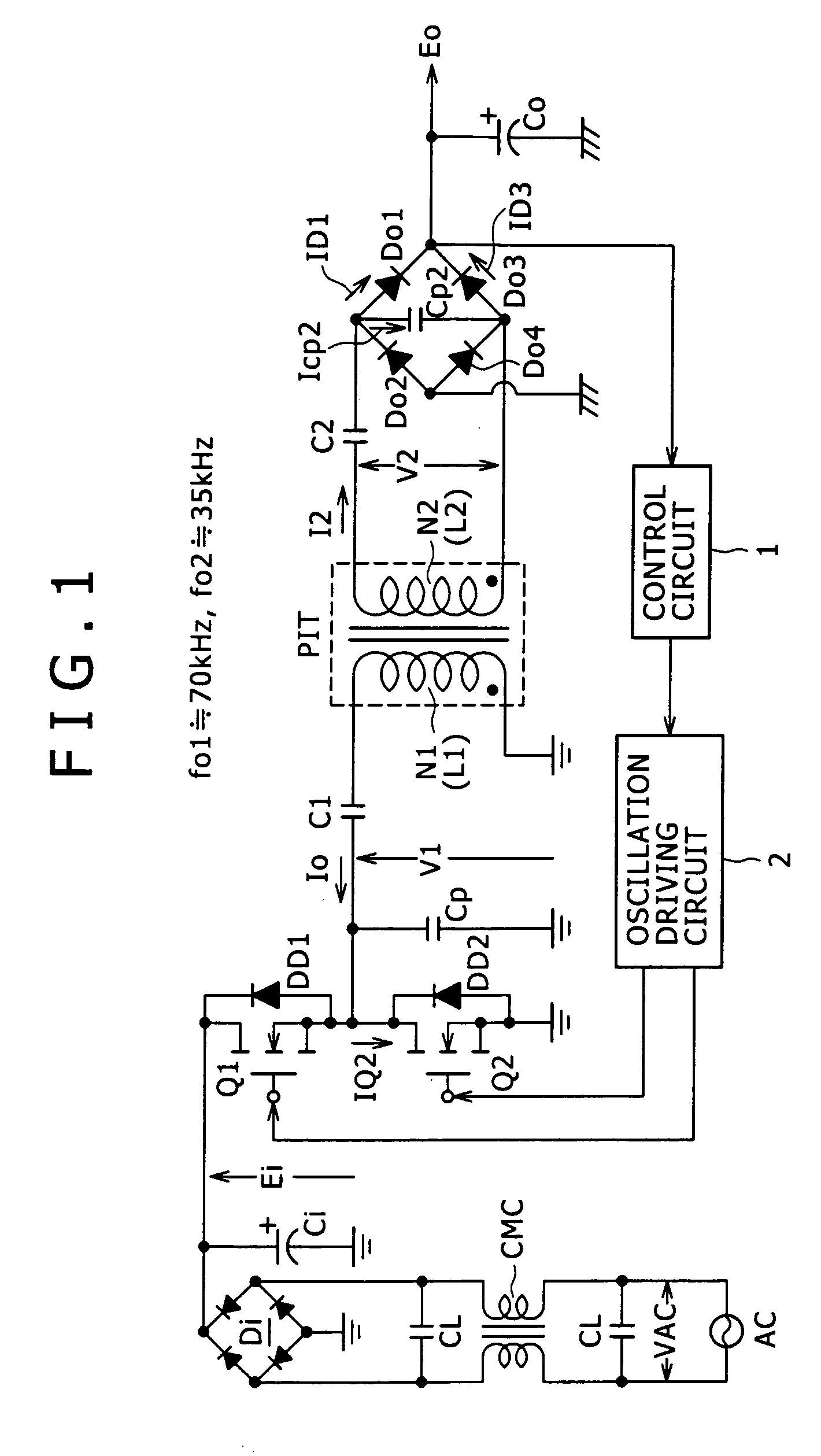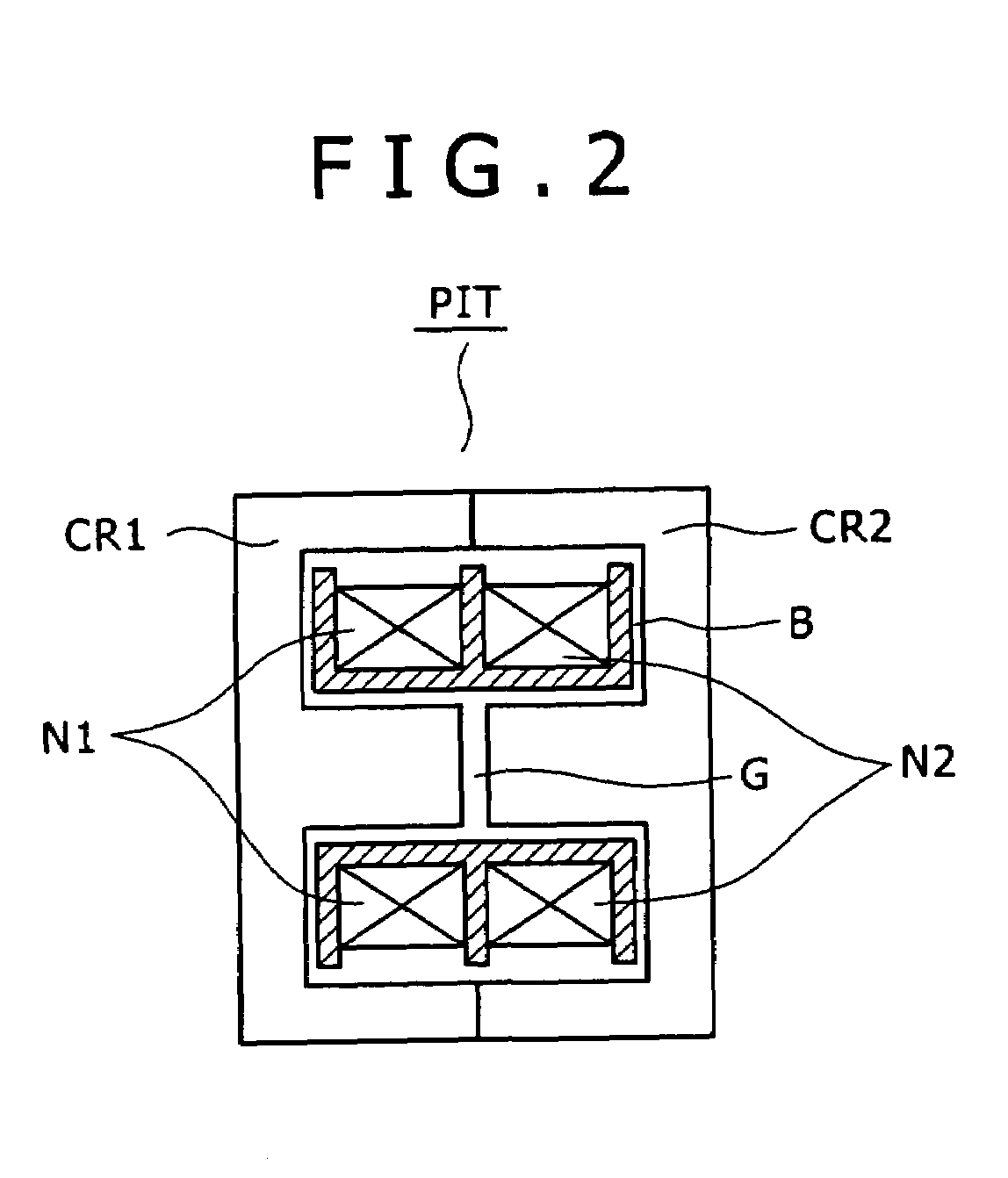Switching power supply circuit
a power supply circuit and switching frequency technology, applied in the direction of electric variable regulation, process and machine control, instruments, etc., can solve the problems of difficult to use the switching driving ic described above as an actual power supply circuit, the upper limit of the driving frequency with which an ic is driven, oscillation, etc., to achieve the reduction of the necessary control range or the necessary control range of the switching frequency required for stabilization, and the effect of reducing the number of circuit components
- Summary
- Abstract
- Description
- Claims
- Application Information
AI Technical Summary
Benefits of technology
Problems solved by technology
Method used
Image
Examples
first embodiment
[0129]FIG. 1 shows an example of the configuration of a switching power supply circuit according to the present invention. Referring to FIG. 1, the power supply circuit is configured such that the basic configuration of the primary side thereof is a combination of a partial voltage resonance circuit with a separated excited current resonance type converter of a half-bridge coupling type.
[0130]Further, the power supply circuit of the first embodiment has a configuration ready for a wide range. The circuit operates in response to commercial AC power supplies of both the AC 100 V type and the AC 200 V type. Further, the power supply circuit is ready for a range of variation of the load power Po, for example, from Po=approximately 150 W (100 W or more) to Po=0 W (no load).
[0131]Furthermore, the power supply circuit is supposed to be used as a power supply, for example, of a printer apparatus and is configured so as to be ready for a load power Po from 150 W to 0 W.
[0132]First, in the po...
second embodiment
[0264]FIG. 11 shows an example of the configuration of a power supply circuit according to the present invention.
[0265]The power supply circuit shown in FIG. 11 has a basic configuration as a multiple composite resonance type converter including a bridge full wave rectification circuit (Di, Ci) as a rectification circuit system for producing a rectification smoothed voltage Ei (DC input voltage) and adopts a half bridge coupling system for a primary side current resonance type converter similar to the power supply circuit described hereinabove with reference to FIG. 1.
[0266]Further, in order to set the coupling coefficient k to k=approximately 0.65 or less, a gap length of approximately 2.8 mm is set for the gap G formed in the inner magnetic leg of an insulating converter transformer PIT having the structure, for example, shown in FIG. 2, in a manner similar to the power supply circuit of the first embodiment shown in FIG. 1.
[0267]Further, it is supposed that the present power supp...
third embodiment
[0325]FIG. 17 shows an example of the configuration of a power supply circuit according to the present invention.
[0326]The power supply circuit shown in FIG. 17 has a basic configuration as a multiple composite resonance type converter. The converter includes a bridge full wave rectification circuit (Di, Ci) as a rectification circuit system for producing a rectification smoothed voltage Ei (DC input voltage) and adopts a half bridge coupling system for a primary side current resonance type converter similar to the power supply circuits described hereinabove with reference to FIGS. 1 and 11.
[0327]Further, in order to set the coupling coefficient k to k=approximately 0.65 or less, a gap length of approximately 2.8 mm is set for the gap G formed in the inner magnetic leg of an insulating converter transformer PIT having the structure, for example, shown in FIG. 2.
[0328]Further, it is supposed that the present power supply circuit is incorporated as a power supply in, for example, a pl...
PUM
 Login to View More
Login to View More Abstract
Description
Claims
Application Information
 Login to View More
Login to View More - R&D
- Intellectual Property
- Life Sciences
- Materials
- Tech Scout
- Unparalleled Data Quality
- Higher Quality Content
- 60% Fewer Hallucinations
Browse by: Latest US Patents, China's latest patents, Technical Efficacy Thesaurus, Application Domain, Technology Topic, Popular Technical Reports.
© 2025 PatSnap. All rights reserved.Legal|Privacy policy|Modern Slavery Act Transparency Statement|Sitemap|About US| Contact US: help@patsnap.com



